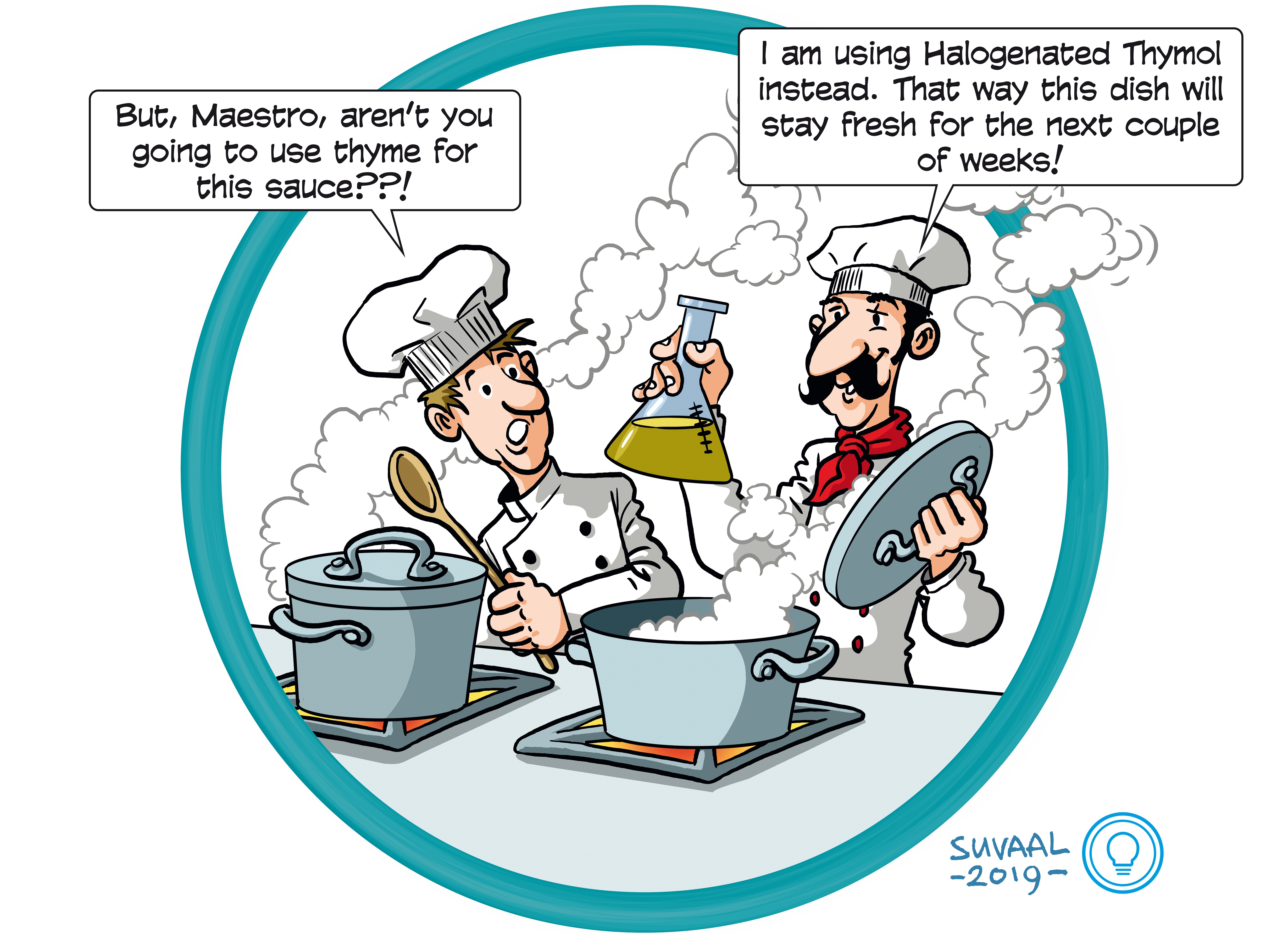A biological synthesis of Chlorothymol
Themes: Health, Chemistry, bio- & process technology


A TRL is a measure to indicate the matureness of a developing technology. When an innovative idea is discovered it is often not directly suitable for application. Usually such novel idea is subjected to further experimentation, testing and prototyping before it can be implemented. The image below shows how to read TRL’s to categorise the innovative ideas.
Summary of the project
Thymol is a naturally occurring organic compound which can be found in in the kitchen herb Thyme. It is the compound which give the distinct fragrance and taste of the herb. This compound is well known and loved for its antiseptic qualities and is used in food and cosmetics as a preservative. Its derivative chlorothymol, however, is a much more potent antiseptic and therefore highly interesting for the applications mentioned above. Chlorothymol, however, is synthesised chemically using ‘toilet chemistry’. Recently, we have developed a biological route for the synthesis of chlorothymol, which may make this compound even more attractive for consumer products. This approach uses a natural chloroperoxidase which initiates the synthesis of chlorothymol (and other, potentially even more potent compounds) under very benign conditions.
Right, now, the synthetic procedure is further optimised eventually enabling k-scale synthesis of chlorothymol at the lab-scale.
What's next?
The next step for the researcher is to set up a start-up company based on this research. To scan for a wider portfolio of products in which Chlorothymol could be used.
Dr. Frank Hollmann
Additional information
<link tnw over-de-faculteit afdelingen biotechnology research-groups biocatalysis hollmann-group>Hollman Group
